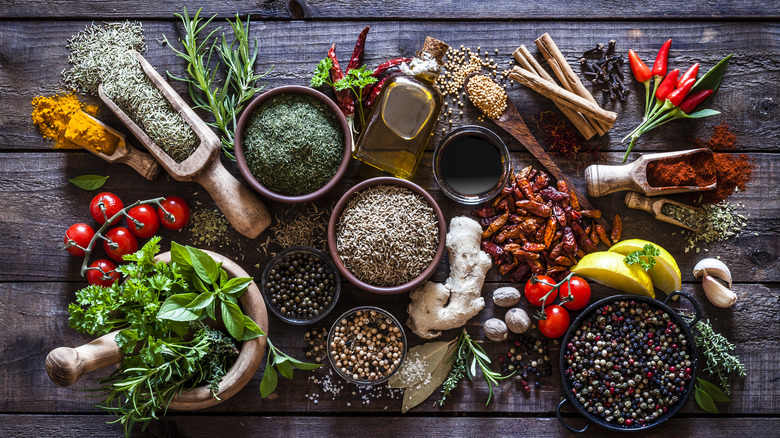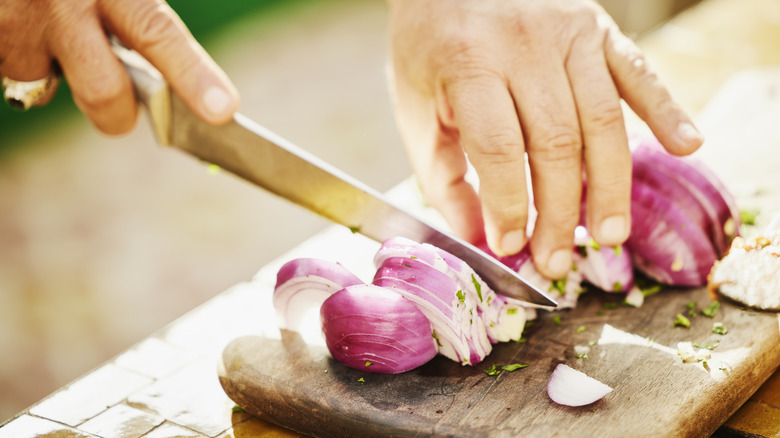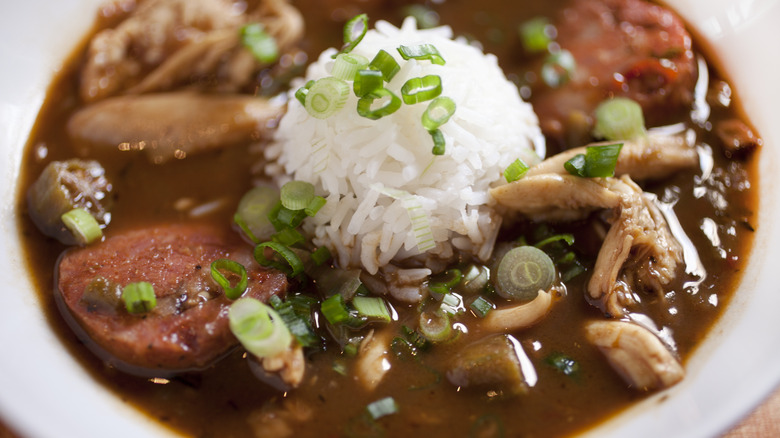When It Comes To Aromatic Ingredients, Your Prep Method Really Matters
If you've ever attempted cooking, odds are you've encountered aromatics without even realizing it. They are ingredients that build a flavor foundation such as onions, garlic, and herbs like parsley and thyme, which create layers of taste that other main components soak in or stack on top of. Different cuisines use particular combinations of this — like the Cajun holy trinity of bell peppers, celery, and onion for gumbo, or the onions, ginger, and spices used in Indian dishes. However, to get the best aromatic results you can't just dump them in a pot and hope for the best.
Every cook has gotten lost in the sauce and put all their focus on the main part of the meal, but it's important to not neglect your other ingredients since they are the key to unlocking flavor and must be prepped with care. What truly impacts aromatics is how finely they're chopped or diced. Size affects how much flavor is released, as well as how easy they are to fish out of a dish if they appear in the final meal.
Thankfully, there are simple tips and tricks to properly sizing your aromatics, so whether you're a seasoned chef or new to the kitchen, you'll be able to handle them like a pro.
Cutting aromatics down to size
Prepping the aromatics for any of these cuisines requires recipe-specific prep that always includes some form of chopping. For recipes like a stock from scratch which removes them before serving, you can keep your ingredients fairly large. Not only are they easier to remove and quick to prep, they will actually taste better. However, this doesn't apply to dishes like pot roast where you leave the large chopped vegetables in the final dish.
When it comes to leaving aromatics incorporated into your meal, size definitely matters. Nobody wants a whole spoonful of just one ingredient, so smaller pieces will spread flavor more evenly throughout your dish. A classic example of this is a French mirepoix — a common flavor base made of carrots, onion, and celery — which requires the vegetables to be chopped into equal-sized cubes.
As with any aromatic base, more chopped sides will be exposed to the surrounding fat so more flavor will seep into the dish, hence why mirepoix is used as a base for everything from beef stew to Spanish sofrito. Using a method like this helps aromatics blend more seamlessly into the final plate, giving your meal the right texture as well. Note that you'll want to keep all your ingredients cut to the same size for even cooking.
How to cook aromatics properly with the right fats and knife skills
Once you've diced up your aromatics, whether into fine slices or large hunks, you'll need to make sure they cook down properly. Given some ingredients are denser than others, be sure to cook aromatics in stages according to what will cook faster. A tip to staying ahead of this is prepping your veggies or spices ahead of time so they're chopped and ready for whenever you add them.
Another tip is matching your aromatics to their proper fats. Using the right fat for your recipe will not only determine the taste but will also be key to the texture melding properly. So while your spicy chicken coconut curry may use coconut milk as its fat base, you wouldn't use that if you were making duck and andouille gumbo, which uses peanut oil and butter.
Of course, you can't do any of this without proper knife skills. Learning certain types of cuts and how to properly perform them will transform your cooking by making the most of your ingredients. For example, the French mirepoix uses the brunoise cut to finely chop and dice the ingredients to just a centimeter of thickness. Fine chopping can seem daunting at first, but after you've learned just five basic knife cuts you'll be well on your way to feeling like a master chef.


